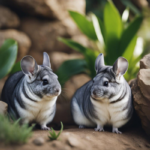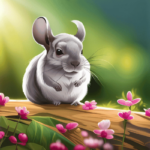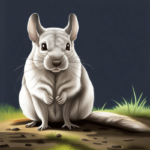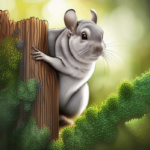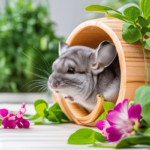With their impossibly soft fur and captivating personalities, Chinchillas have captivated hearts worldwide. But beneath their adorable exterior lies a complex creature with distinct needs and behaviours.
Mastering chinchilla behaviour is the key to unlocking a fulfilling and harmonious relationship with your furry friend. This comprehensive guide delves deep into the fascinating world of chinchillas, equipping you with the knowledge and tools to create a life of joy and contentment for both of you.
Getting to Know Your Chinchilla Behaviour

Embarking on a journey of chinchilla companionship begins with a solid understanding of their instincts and behaviours. What are the typical behaviours exhibited by chinchillas, and how can you interpret their cues for optimal care and interaction?
Chinchillas are naturally social creatures, thriving in the company of their kind. However, when domesticated, they form strong bonds with their human caregivers. These small rodents are known for their playful nature, leaping and bounding with incredible agility.
Understanding their communication signals, such as vocalizations and body language, is crucial for fostering a harmonious relationship.
Understanding Chinchilla Body Language

The Silent Language of Ears and Whiskers
Chinchillas communicate through body language, and their ears and whiskers are powerful tools. Learn to decipher these subtle signals to better understand your furry friend’s mood and needs.
Tail Tales: Decode the Wagging
Chinchillas express themselves through their tails. A wagging tail can signify excitement or curiosity, while a puffed-up tail may indicate fear or agitation. Mastering this aspect of Chinchilla Behaviour Mastery ensures a harmonious relationship.
Quick Tip:
When your chinchilla stands on its hind legs and sniffs the air, it’s not just being curious it’s assessing its surroundings. Create an enriching environment to stimulate their inquisitive nature.
Creating a Chinchilla Friendly Environment
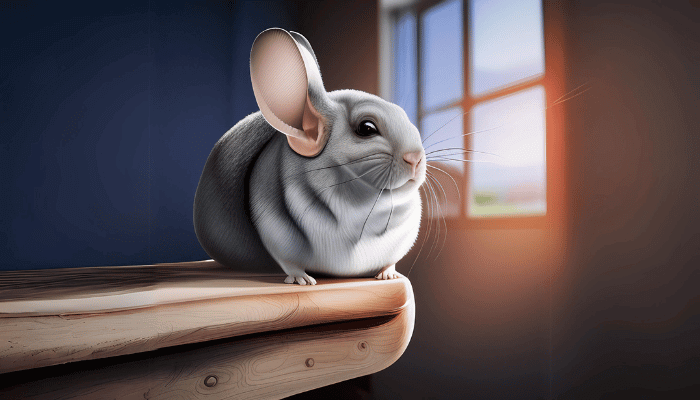
Chinchillas thrive in spacious enclosures with ample opportunities for exercise and enrichment. Their natural habitat is the Andes Mountains, so providing climbing structures, ledges, and hideaways is essential for replicating their wild instincts. Here are some key elements for a happy chinchilla home:
Temperature: Chinchillas are sensitive to heat and prefer cooler temperatures between 50°F and 70°F. Ensure proper ventilation and avoid placing their enclosure near heat sources.
Dust Baths: Provide a dust bath container filled with chinchilla-specific dust at least twice a week. This is crucial for their fur maintenance and overall well-being.
Chewing Toys: Chinchillas have constantly growing teeth that need constant gnawing. Offer a variety of safe chew toys made from wood, hay, or pumice to prevent them from nibbling on furniture or cage bars.
Dietary Delights for Chinchilla Happiness
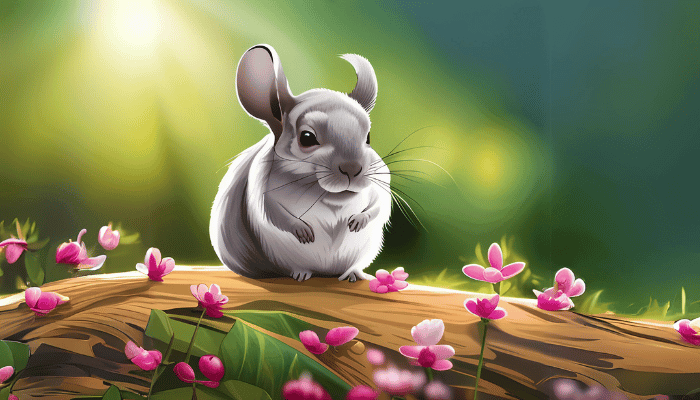
A cornerstone of Chinchilla Behaviour Mastery is a well-balanced and nutritious diet. What should you feed your chinchilla to ensure they lead a healthy and happy life?
Chinchillas thrive on a diet primarily composed of high-fiber hay, supplemented with pellets containing essential nutrients. Fresh vegetables and occasional treats like dried fruits contribute to a diverse and enjoyable menu. Keep a watchful eye on their water intake, ensuring a constant supply of clean, fresh water.
Pro Tip:
Offer a variety of hays like timothy and alfalfa to keep your chinchilla’s diet interesting and nutritionally complete.
The Playful World of Chinchilla Toys

Engaging your chinchilla in playful activities is an integral aspect of their well-being. What toys are best suited to stimulate their active minds and bodies?
Chinchillas adore toys that cater to their love of climbing, jumping, and chewing. Invest in safe wooden toys, tunnels, and platforms to keep them entertained. Rotate their toys regularly to prevent boredom, promoting mental stimulation and physical activity.
Note:
Avoid toys with small parts that could be chewed off and ingested. Safety first for your furry friend!
Handling and Bonding
Establishing a strong bond with your chinchilla involves patient and gentle handling. How can you ensure positive interactions and foster a relationship built on trust?
Approach your chinchilla with slow movements, allowing them to become accustomed to your presence. Offer treats as positive reinforcement, gradually progressing to gentle strokes and handling. Building trust takes time, but a well-bonded chinchilla is more likely to exhibit happy and relaxed behaviors.
Health Check: Detecting Signs of Discomfort
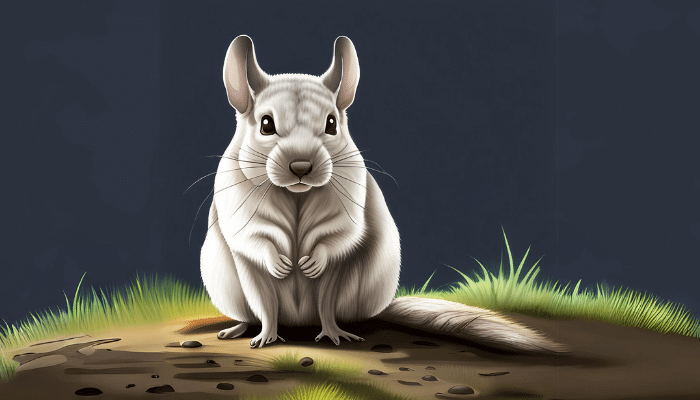
Your Ultimate Guide to Pet Happiness includes being vigilant about your pet’s health. What signs should you watch for to detect potential health issues?
Regularly observe your chinchilla for any changes in behaviour, fur quality, or eating habits. Teeth grinding, lethargy, or hunched posture may indicate discomfort. If you notice any unusual symptoms, consult with a veterinarian experienced in chinchilla care promptly.
Chinchilla Social Dynamics
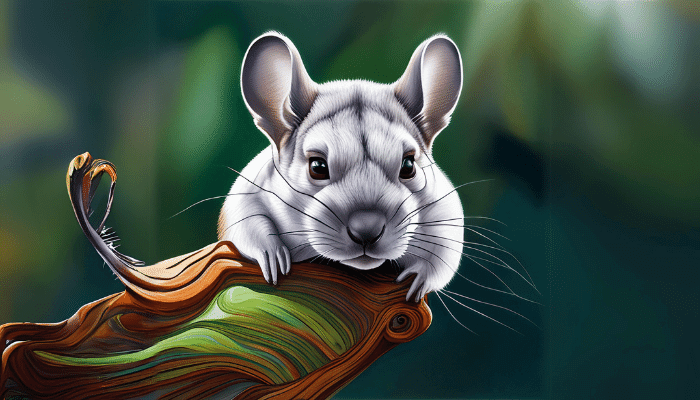
Understanding the social dynamics within a group of chinchillas is crucial for multiple-pet households. How can you ensure a harmonious living arrangement among your chinchilla companions?
Chinchillas are generally social animals, but introductions should be gradual. Provide separate cages initially, allowing them to become familiar with each other’s scents. Supervise initial interactions, and if signs of aggression persist, separate the chinchillas to prevent injury.
Did you know?
Chinchillas are more active during the evening and night, making them crepuscular creatures. Understanding their natural behavior patterns helps you sync with their lifestyle.
Grooming for Chinchilla Elegance
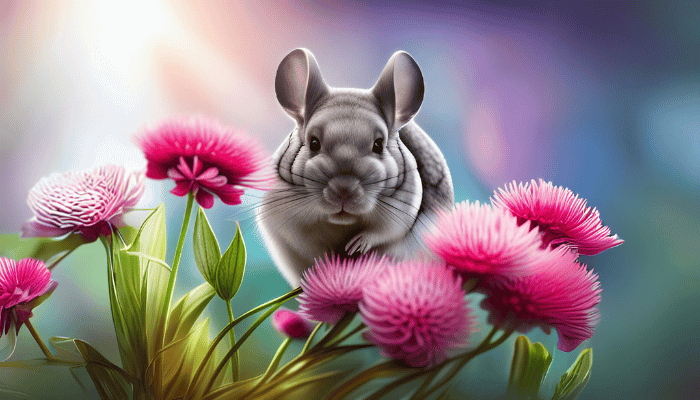
Chinchillas are meticulous groomers, but they may need assistance in maintaining their luxurious fur. How can you help them stay clean and healthy?
Dust baths are essential for chinchilla grooming. Provide a dust bath 2-3 times per week, allowing them to roll and flip to remove excess oils and debris. Regularly check their fur for any signs of matting or abnormalities, addressing grooming needs promptly.
Conclusion
Your Ultimate Guide to Pet Happiness empowers you to create a fulfilling and joyous life for your chinchilla companion. From understanding their behaviours to providing an enriching environment, your efforts contribute to a harmonious relationship. Cherish the moments of playfulness, and revel in the unique bond formed with these delightful creatures.
FAQs

Do chinchillas enjoy human company?
Yes, chinchillas can form strong bonds with their human caregivers and enjoy interactive play.
Why Do Chinchillas Chew Everything?
Chewing is a natural behavior for chinchillas. It helps them maintain healthy teeth, which grow continuously. Provide a variety of safe chew toys to satisfy this instinct.
What should I do if my chinchilla seems stressed?
Identify and eliminate potential stressors, create a calm environment, and offer comforting interactions.
How long do chinchillas live?
With proper care, chinchillas can live for 10-15 years, making them a long-term commitment.
Do Chinchillas Get Lonely?
Yes, chinchillas can feel lonely if kept alone. Consider adopting a pair to ensure they have companionship. If that’s not possible, spend quality time interacting with your chinchilla daily.
How Do I Bond with My Chinchilla?
Patience is key. Spend time sitting near their cage, offering treats, and allowing them to come to you. Gradually increase physical interaction as they become more comfortable.
Can Chinchillas Be Trained?
Yes, chinchillas can be trained using positive reinforcement. Start with simple commands and reward them with treats. Keep training sessions short and enjoyable.



